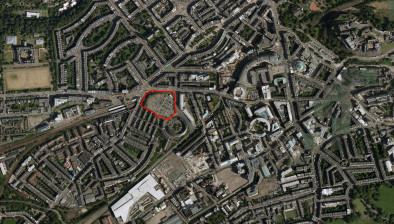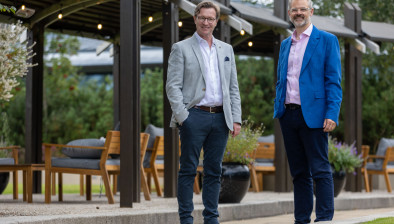Partnership aims to develop 3D concrete printing in construction

Skanska and Loughborough University have signed a collaboration agreement to develop the use of 3D printing in construction.
The aim of the agreement is to allow Skanska to use – under licence – 3D concrete printing technology developed through research at Loughborough University, applying it to real applications.
A team in the School of Civil and Building Engineering at Loughborough, led by Dr Richard Buswell and Professor Simon Austin, have worked on the development of 3D printing technology for the construction industry since 2007. The project was started under the Engineering and Physical Sciences Research Council’s (EPSRC) Innovative Manufacturing and Construction Research Centre (IMCRC). The team have developed 3D concrete printers fitted to a gantry and a robotic arm, which is now in its second-generation form.
The printer deposits a high–performance concrete precisely under computer control. It works by laying down successive layers of concrete until the entire object is created. The printer can make things which cannot be manufactured by conventional processes such as complex structural components, curved cladding panels and architectural features.
The aim of the initial 18-month development programme is to develop the world’s first commercial concrete printing robot. Working with Skanska are a number of influential collaborators including Foster + Partners, Buchan Concrete, ABB and Lafarge Tarmac. As a result of this programme, Skanska aims to explore opportunities opened up by the new technology and help develop a 3D printing supply chain.
The agreement puts Skanska in a good position to capitalise on an emerging technology with the potential to revolutionise the design and construction process.
Rob Francis, Skanska’s director of innovation and business improvement, said: “3D concrete printing, when combined with a type of mobile prefabrication centre, has the potential to reduce the time needed to create complex elements of buildings from weeks to hours. We expect to achieve a level of quality and efficiency which has never been seen before in construction.”
Dr Richard Buswell from the Building Energy Research Group at Loughborough University added: “The modern construction industry is becoming more and more demanding in terms of design and construction. We have reached a point where new developments in construction manufacturing are required to meet the new challenges and our research has sought to respond to that challenge.
“We are pleased and excited by the opportunity to develop the world’s first commercial 3D concrete printing robot with Skanska and their consortium. We have been convinced of its viability in the lab, but it now needs the industry to adapt the technology to service real applications in construction and architecture.”













